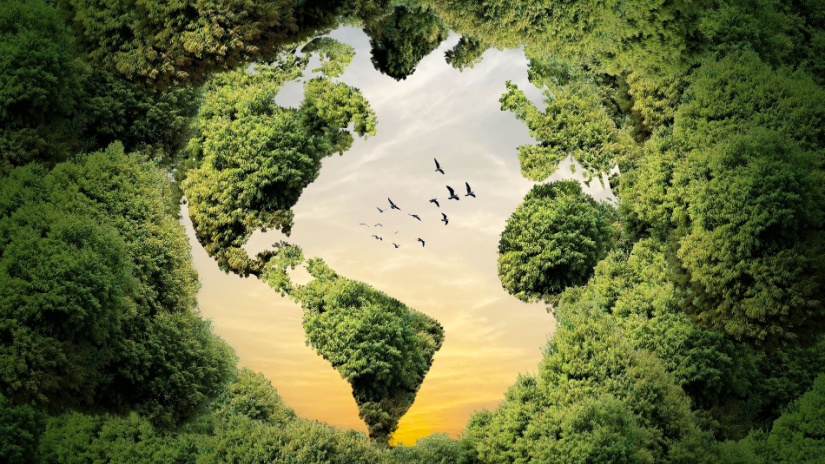Knowledge Centre
Can Australia become a clean energy superpower?

Australia has long been known for its vast natural resources. Coal, gas and iron ore have driven the economy for decades, turning the country into a major global exporter. But as the world moves towards net zero, those traditional industries face decline. In response, a new idea is gaining momentum - that Australia can become a clean energy superpower.
This vision is bold. It suggests that Australia can export not only renewable electricity but also new clean energy products such as green hydrogen and critical minerals.
Supporters say the country has the raw materials, the land, and the sunlight to lead the global transition. But turning this potential into reality is a major challenge.
What being a clean energy superpower actually means
A clean energy superpower is a country that doesn’t just generate renewable energy for its own use but also exports it - either directly or in the form of clean energy products.
For Australia, this could mean shipping green hydrogen to other countries, supplying the world with rare earths needed for batteries and wind turbines, or exporting zero-emissions electricity through international cables.
The goal is not only to replace income from fossil fuels but to strengthen Australia's place in the future energy economy. That would involve new industries, new jobs and new supply chains built around clean technology.
Green hydrogen - high hopes and hard work
One of the most talked-about opportunities is green hydrogen. This is hydrogen made using renewable electricity, without producing any emissions. Hydrogen can be used in place of fossil fuels in industries like steelmaking, shipping and heavy transport, where other forms of clean energy are harder to apply.
Australia has the land, sunshine and wind needed to produce large amounts of renewable electricity, which can then be used to make green hydrogen.
In theory, this makes Australia an ideal location to become a major hydrogen exporter. Several pilot projects and partnerships have already been announced, and governments are supporting the idea through funding and planning.
However, the path ahead is not simple. Producing green hydrogen at scale requires huge amounts of renewable power, water and infrastructure. It also needs global demand to grow fast enough to justify the investment. At the moment, hydrogen made from fossil fuels is still much cheaper, and clean hydrogen supply chains are still being developed.
While the potential is there, the real test will be building the projects, cutting the costs and proving that Australia can deliver green hydrogen reliably and competitively.
Rare earths and critical minerals
Another part of Australia’s clean energy potential lies underground. The country has large reserves of critical minerals, including lithium, cobalt, nickel and rare earth elements. These materials are essential for making batteries, electric vehicles, solar panels and wind turbines.
Global demand for these minerals is growing quickly, and countries around the world are looking for stable, responsible suppliers. Australia is well-positioned to meet that need. It already produces much of the world’s lithium and is looking to expand processing and refining capacity onshore, instead of just exporting raw materials.
The challenge is to move further up the value chain. That means not just digging up minerals, but turning them into finished materials or components. Doing this would bring more value to the economy and create new industries, but it requires major investment, skilled labour and stronger manufacturing capabilities.
If Australia can build a reputation as a trusted supplier of clean energy materials, it could play a vital role in global supply chains - especially as other countries try to reduce dependence on unstable or less transparent markets.
Clean electricity - export or use it here?
Australia’s sun and wind resources are among the best in the world. This makes renewable electricity one of its strongest assets. But when it comes to exporting clean electricity directly, the options are limited.
One ambitious project involves sending solar energy from the Northern Territory to Singapore using a massive undersea cable. If built, this would be one of the largest infrastructure projects ever attempted. It shows what might be possible - but also how technically difficult and costly it can be.
In many ways, Australia’s clean electricity may be more valuable when used at home to power local industries. Cheap, reliable renewable energy can make Australian manufacturing more competitive and help produce green steel, clean hydrogen or processed minerals.
These products could then be exported, allowing Australia to sell its renewable energy in a different form.
Talk versus action
The idea of Australia becoming a clean energy superpower is compelling, and there is no shortage of plans, reports and announcements. But turning that vision into action requires more than just talk.
Infrastructure needs to be built, skilled workers need to be trained, and businesses need long-term confidence. Many projects are still in early stages, and some are struggling with delays, planning challenges or uncertainty about future demand.
Policy also plays a big role. Long-term, stable energy and climate policies are needed to attract investment and give global partners confidence. The competition is growing too - other countries are racing to take the lead in clean energy exports, and Australia will need to move quickly to stay ahead.
A real opportunity... if it’s taken
Australia absolutely has the resources and the chance to become a major player in the global clean energy economy. The land, the minerals and the renewable potential are all in place. But those advantages won’t mean much if the country does not act quickly and decisively.
Becoming a clean energy superpower is possible, but it will take more than promises. It will require long-term thinking, large-scale investment, strong coordination and a commitment to building industries that may take years to mature.
This is not just an environmental question - it is an economic one. The world is changing, and Australia has a choice: lead the transition or be left behind. The time for talk is over. Now comes the hard part: delivering on the promise.
To find out how Australia’s clean energy shift could affect your electricity options, speak to Compare Energy on 1300 790 106.

